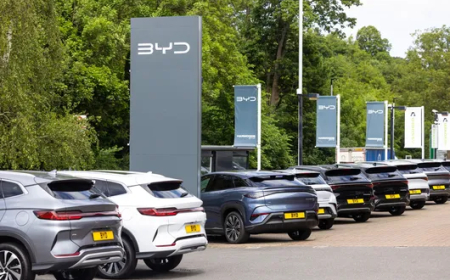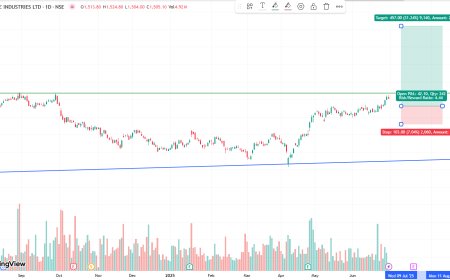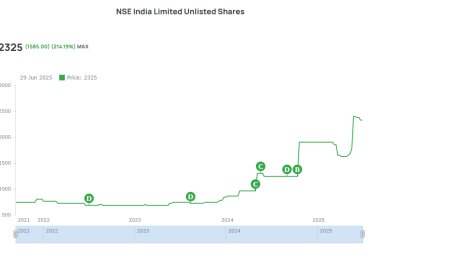For a $5 Trillion Economy, India Must Embrace Cutting-Edge Tech, Say Experts
Experts suggest India must adopt cutting-edge technologies like AI, blockchain, and 5G to reach its $5 trillion economy target. Learn how tech is shaping India's economic future.

India’s $5 Trillion Dream: Technology at the Core
India has set its sights on becoming a $5 trillion economy by the end of this decade—a milestone that would catapult it into the league of major global economic powers. While structural reforms, infrastructure development, and policy liberalisation form essential pillars of this growth narrative, experts underline that a major transformation in the tech landscape is non-negotiable.
“Technology is no longer a sector—it’s a horizontal enabler. Whether it’s agriculture, manufacturing, or services, adopting cutting-edge technologies such as artificial intelligence, blockchain, quantum computing, and advanced analytics is the only way to ensure sustained and inclusive economic growth,” said Rajan Mehta, Senior Economist at the Center for Digital India Research.
Key Technologies Driving Economic Potential
Several technologies are poised to drive India’s next wave of growth. Among them:
-
Artificial Intelligence (AI): AI integration can add up to $500 billion to India’s GDP by 2025, according to a report by NASSCOM.
-
5G and Telecom Infrastructure: Fast and widespread connectivity is essential for digital commerce, remote work, telemedicine, and smart manufacturing.
-
Blockchain: Especially in governance, supply chain transparency, and finance, blockchain can revolutionise trust and accountability.
-
Internet of Things (IoT): With smart cities and precision agriculture gaining momentum, IoT devices will be key to improving productivity and efficiency.
-
Green Tech: As climate goals become integral to economic planning, innovations in renewable energy, electric mobility, and sustainable tech are vital.
Government Push: Policies to Support Technological Integration
The Indian government has launched several initiatives to stimulate tech adoption:
-
Digital India Mission continues to expand broadband infrastructure and digital literacy.
-
PLI (Production-Linked Incentive) schemes have been instrumental in promoting electronics and semiconductor manufacturing.
-
Startup India and MeitY initiatives are fuelling innovation and entrepreneurship, especially in deep tech.
Moreover, the upcoming AI Mission, as announced in the interim Budget 2024-25, is expected to build a robust AI ecosystem, backed by public-private partnerships and dedicated AI compute capacity.
“India must not just be a user of foreign technologies but become a creator. That means doubling down on R&D investment, IP generation, and skilling the next generation of tech workers,” said Dr. Neha Sharma, Head of Innovation at the Indian Institute of Technology (IIT) Delhi.
Private Sector Leading the Innovation Charge
India's private sector has shown promising strides in tech integration:
-
Reliance Jio has deployed pan-India 5G faster than many global peers.
-
Tata Group’s semiconductor plans mark a bold step in chip manufacturing.
-
Startups like Zoho, Freshworks, and Ola Electric are innovating in SaaS, electric mobility, and AI-based solutions.
Venture capital is also showing increasing confidence. In 2024, India saw over $5.3 billion invested in tech startups in just the first half of the year, as per Tracxn data.
Bridging the Skill Gap
A key challenge remains in workforce readiness. India has the world's largest youth population, but the skills gap is widening with the pace of tech advancement.
To counter this, the Skill India Mission is being recalibrated to focus on digital fluency, AI tools, coding, cybersecurity, and data analytics. Industry-academia collaboration is also deepening to revamp curricula in higher education.
“Without adequately skilled human capital, even the best technologies will sit idle. We must empower our youth to lead the digital revolution,” stressed Anjali Deshmukh, Policy Advisor at NITI Aayog.
Challenges on the Path
Despite the promise, there are hurdles:
-
Digital Divide: Rural-urban disparity in access to digital infrastructure remains high.
-
Cybersecurity Threats: A rise in digital transactions and online activities makes India a hotspot for cybercrime.
-
Capital Constraints: Small and medium enterprises (SMEs), the backbone of the Indian economy, often lack funds and know-how to implement advanced tech.
Experts argue for greater public-private synergy, regulatory clarity, and consistent long-term digital policies to address these barriers.
Investor Outlook: Technology as a Growth Multiplier
Analysts believe that tech-driven sectors will outperform traditional industries over the next decade.
“Investors should look at Indian companies with strong digital transformation plans or those enabling tech adoption across sectors. These will be the big beneficiaries of the $5 trillion economy journey,” noted Suresh Iyer, Fund Manager at Quantum Mutual Fund.
He added that thematic funds focused on digital innovation, automation, or green tech are likely to gain traction, especially among millennials and retail investors.
India’s journey to a $5 trillion economy is not just a question of GDP arithmetic—it is about transforming how the country works, learns, manufactures, and delivers. Technology, in this transformation, will not be optional but existential.
With robust policy backing, an eager startup ecosystem, and the world’s largest young workforce, India is at the cusp of a tech-led economic revolution. The coming years will determine whether the country leverages its digital strengths to not just reach, but exceed the $5 trillion target.
What's Your Reaction?
 Like
0
Like
0
 Dislike
0
Dislike
0
 Love
0
Love
0
 Funny
0
Funny
0
 Angry
0
Angry
0
 Sad
0
Sad
0
 Wow
0
Wow
0












































































